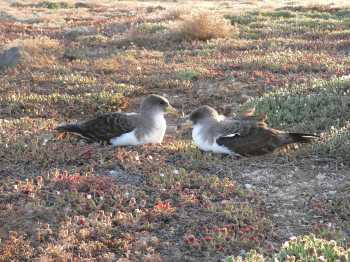Airam Rodríguez (Department of Evolutionary Ecology, Estación Biológica de Doñana, Seville, Spain) and colleagues, writing in the journal Ibis, have looked at the deleterious effects of light pollution on shearwaters and petrels in the Canary Islands.
The paper's abstract follows:
"The secretive breeding behaviour of petrels makes monitoring their breeding populations challenging. To assess population trends of Cory's Shearwater Calonectris diomedea, Bulwer's Petrel Bulweria bulwerii and Macaronesian Shearwater Puffinus baroli in Tenerife from 1990 to 2010, we used data from rescue campaigns that aim to reduce the mortality of fledgling petrels attracted to artificial lights as proxies for trends in breeding population size. Despite increases in human population size and light pollution, the number of rescued fledglings of Cory's Shearwater and Bulwer's Petrel increased and remained stable, respectively, whereas numbers of rescued Macaronesian Shearwaters sharply declined. In the absence of more accurate population estimates, these results suggest a worrying decline in the Macaronesian Shearwater's breeding population."

Cory's Shearwaters. Photograph by Paulo Catry
Click here for an earlier news story on light pollution affecting Cory's Shearwaters.
Reference:
Rodríguez, A., Rodríguez, B. & Lucas, M.P. 2012. Trends in numbers of petrels attracted to artificial lights suggest population declines in Tenerife, Canary Islands. Ibis 154: 167-172.
John Cooper, ACAP Information Officer, 30 March 2012

 English
English  Français
Français  Español
Español